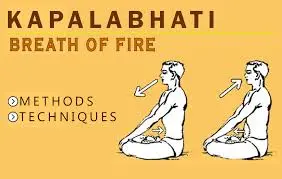Did you know that practicing Kapalbhati Pranayama, a simple yet profound breathing exercise, for just 15 minutes a day can significantly enhance your overall well-being? Yes, you read that right! According to recent studies conducted by renowned health institutions, including the National Institutes of Health (NIH) and the American Journal of Lifestyle Medicine, incorporating Kapalbhati Pranayama steps into your daily routine can lead to remarkable improvements in both physical health and lifestyle.
This dynamic breathing exercise involves forceful exhalations followed by passive inhalations, stimulating the abdominal muscles and diaphragm. As you engage in Kapalbhati Pranayama, you not only oxygenate your body but also release accumulated toxins, tensions, and stressors, revitalizing your entire being from within.
Contents
What is Kapalbhati
Kapalbhati, often referred to as Kapalbhati Pranayama, is a yogic breathing technique that originates from ancient Indian traditions. The term “Kapalbhati” is derived from Sanskrit, where “Kapal” means forehead or skull, and “Bhati” means shining or illuminating. Therefore, Kapalbhati can be interpreted as “shining forehead” or “illuminating skull,” symbolizing the cleansing and purification effects it has on the mind and body.
In Kapalbhati Pranayama, the breath is emphasized as a vital force that not only sustains life but also serves as a vehicle for cleansing and rejuvenating the body’s internal systems. Unlike other pranayama techniques that involve both inhalation and exhalation, Kapalbhati primarily focuses on forceful exhalations followed by passive inhalations.
Check More Blogs :- Ujjayi Pranayama Benefits
Meaning of Kapalabhati Breath

The Kapalabhati breath, also known as Kapalbhati Pranayama, is a fundamental yogic breathing technique that focuses on controlled and forceful exhalations followed by passive inhalations.
The Kapalabhati breath is often described as energizing and purifying. It is believed to cleanse the respiratory system, oxygenate the body, and invigorate the mind. Regular practice of Kapalabhati is said to improve lung capacity, enhance digestion, and promote mental clarity and focus.
It is important to approach Kapalabhati with mindfulness and awareness, focusing on the rhythmic movement of the breath and maintaining a steady pace. Beginners may start with a slower tempo and gradually increase the speed as they become more comfortable with the technique.
